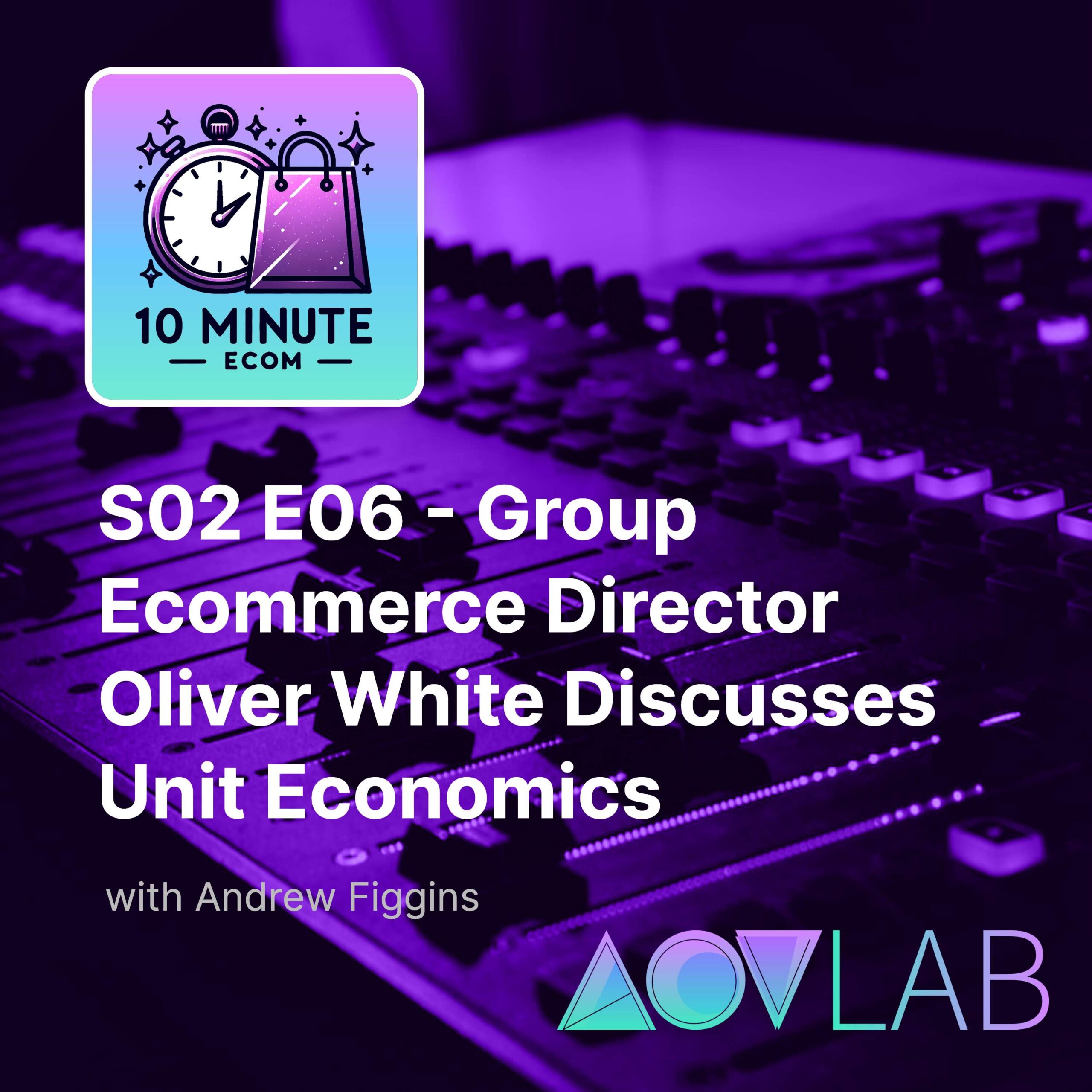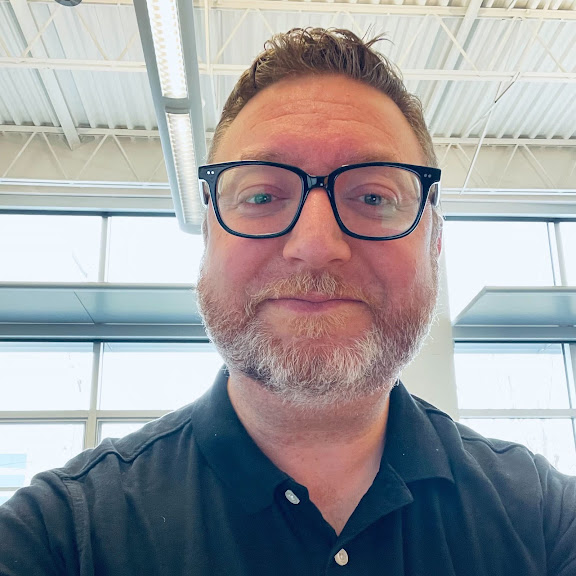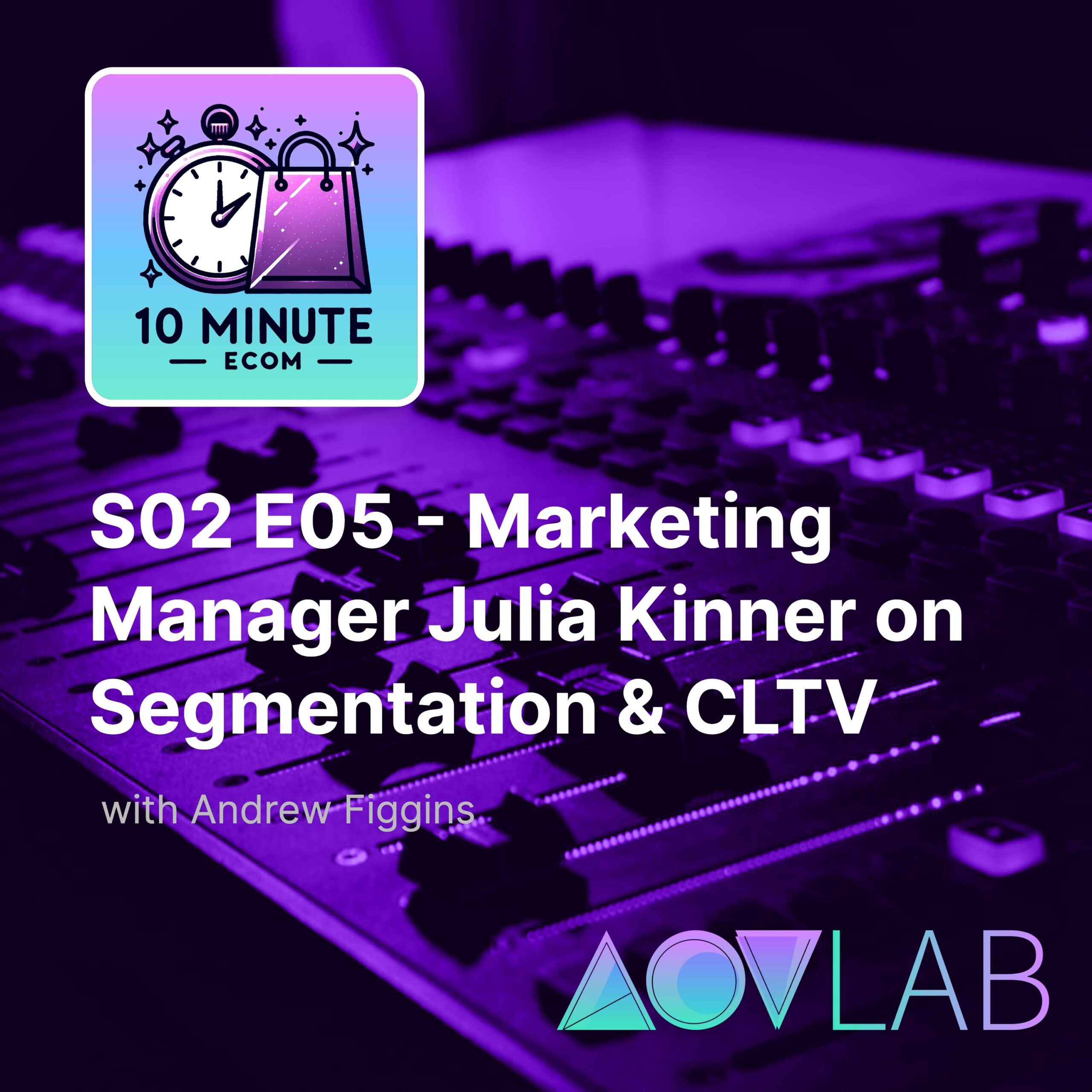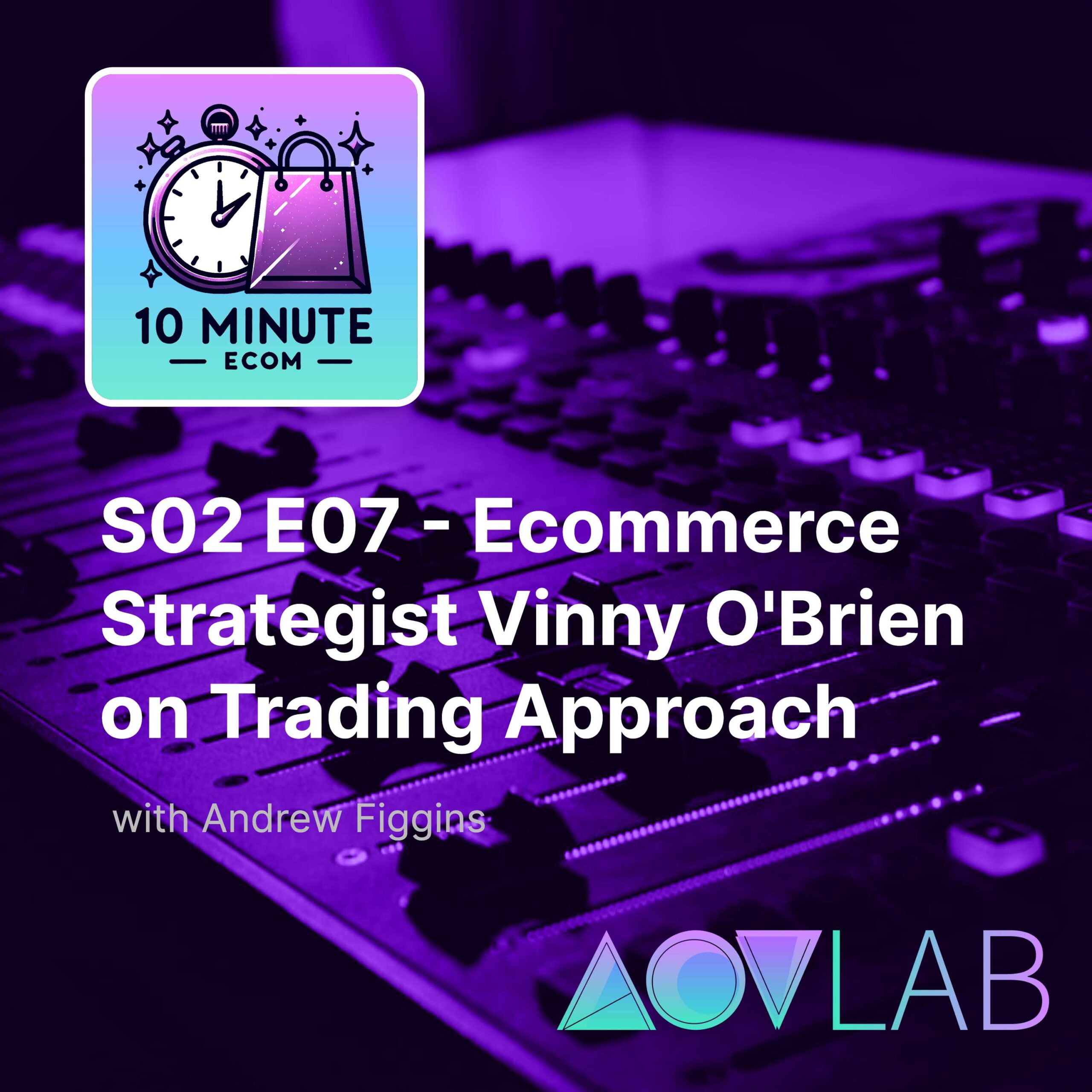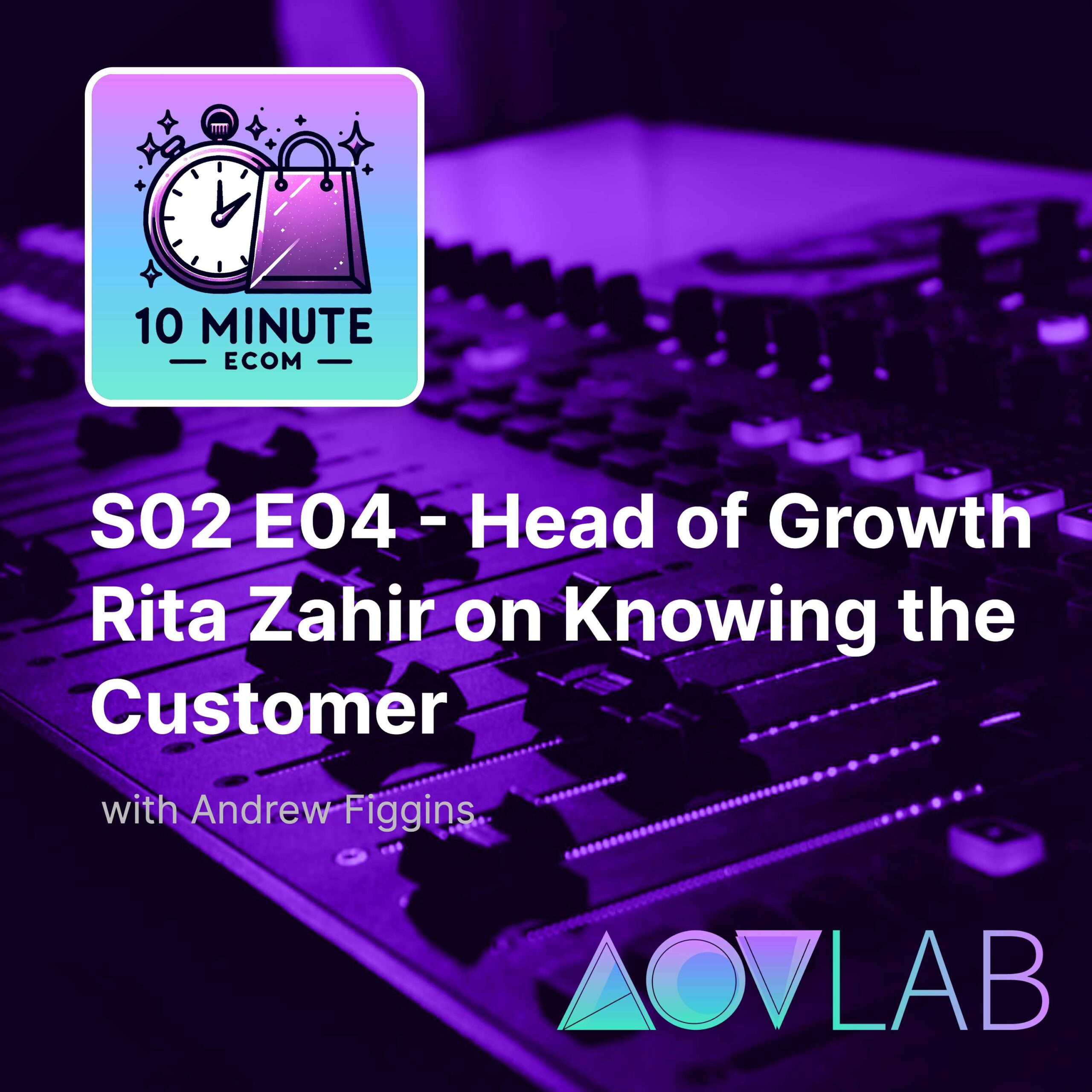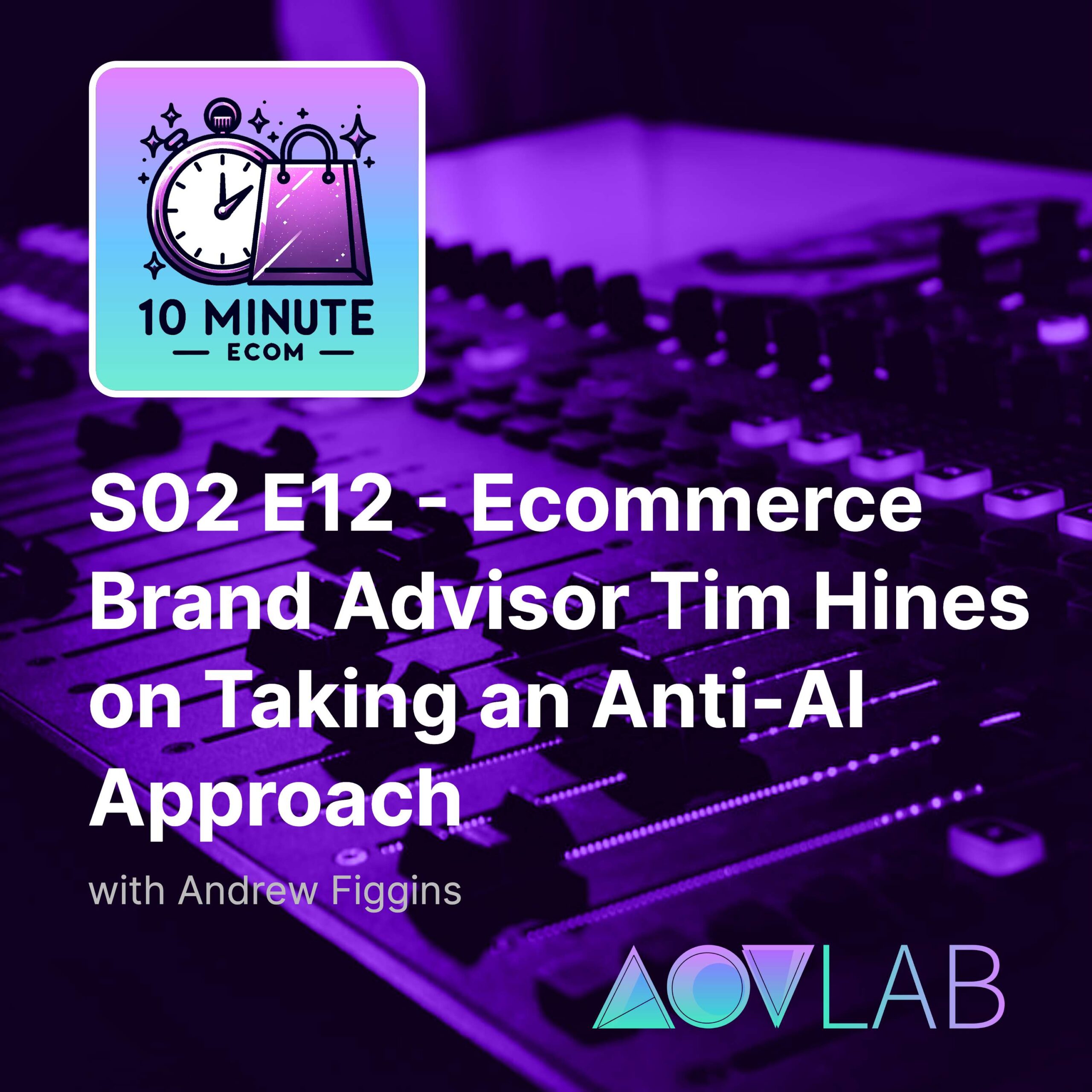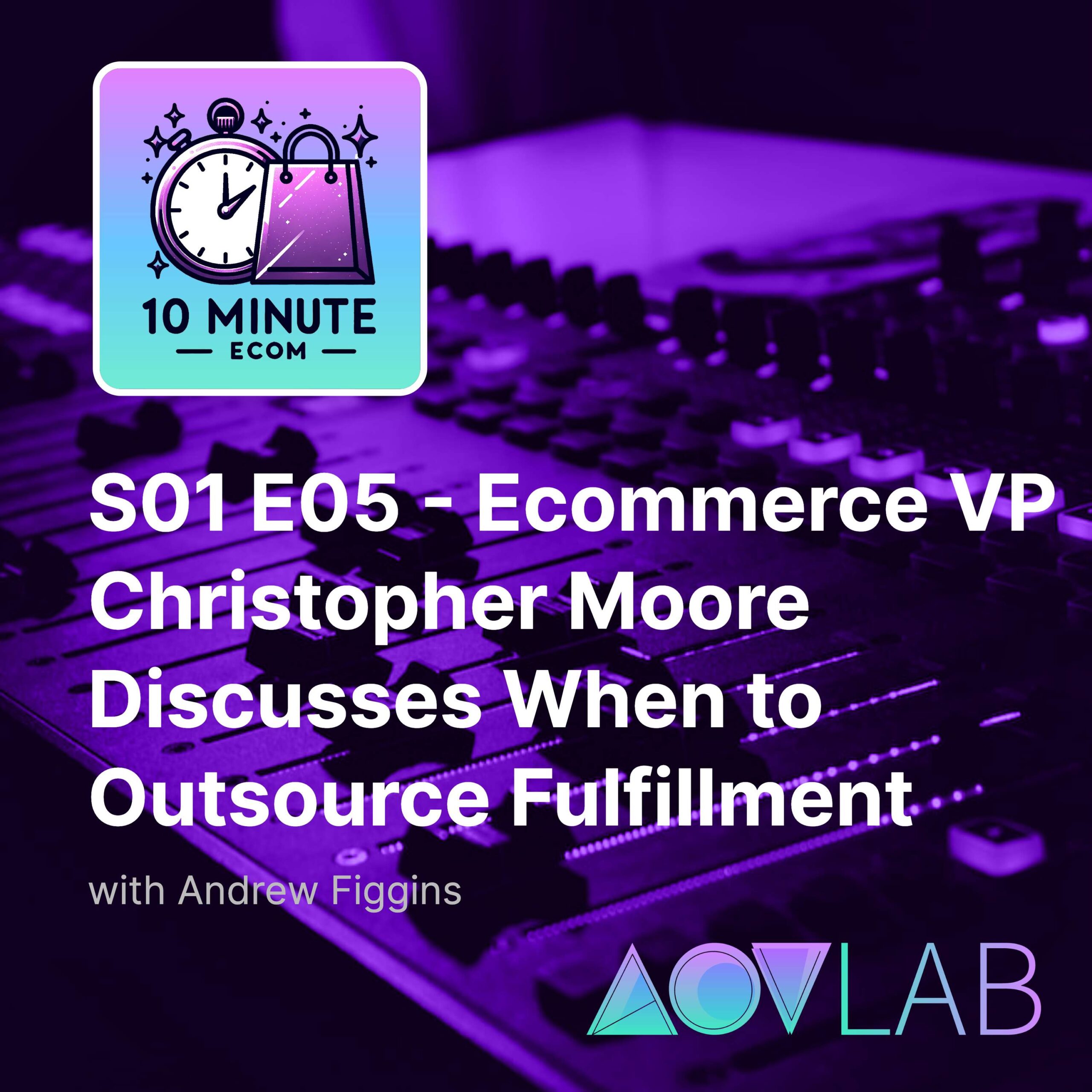View Full Transcript
Episode Transcript
[00:00:07] Speaker A: Hello ecommerce fans, and welcome to ten minute Ecom, an AOV Lab podcast. Every episode we break down a new and different tactic that can help you improve your ecommerce KPIs key performance indicators. I'm your host Andrew Figgins, and most of you, I am an ecommerce professional. You may know me as the found of AOV Lab, the former vp of product innovation at Scrubs and beyond, or is the former director of e commerce technology at Rural King.
Today I'm excited to be talking to.
[00:00:36] Speaker B: Oliver White, an e commerce colleague that.
[00:00:39] Speaker A: Is doing some very interesting work and very international work in e commerce. Anyway, Oliver, what did you come on the show today to share with your e commerce colleagues?
[00:00:48] Speaker C: Hi, I'm Oliver White. I am the group executive director of commerce for MCN, which is part of IPG. IPG globally are one of the big four marketing media digital communications groups, so I look after the commerce offering across predominantly Middle east and Asia Pacific markets. So in terms of today's topic, one thing that I think is increasingly relevant in today's macroeconomic climate is e commerce profitability. We've seen lots in the news recently about some of the big ecommerce platforms in various different markets, shifting focus from top line to bottom line and the impact that's having on businesses, brands and also consumers.
[00:01:33] Speaker A: Thank you Oliver. After the ad, we'll get right into the chat.
Today's episode of Ten minute Ecom is brought to you by Shop Aov Lablab.com. It is a brand new store with fun apparel and gear specifically for ecommerce professional just like you and me, we've got high quality embroidered and printed t shirts, hoodies and hats that will spice up any Zoom call or in person meeting with your team. If you lead a team, these products make for awesome gifts to celebrate hitting a conversion rate or average order value milestone. If you work in ecommerce, I think you'll not only find some humor in these products, but also a sense of pride for what you do every day. Again, the site is shop AoV lablab.com. Head over right now and browse while you listen. Unless you're driving, in that case, pull over. You've got to see and share these products one last time. The website is shop aov lablab.com.
And now back to the show.
[00:02:37] Speaker B: Thanks so much Oliver, and I'm so happy that you stopped by ten minute Ecom today to chat about unit economics. And I think like you said before we started the recording, it's not necessarily the sexiest topic, but at the same time, at the end of the year, after all the expenses are laid out and all the revenue has come in, how much money you have left is super important. And companies across the globe obviously are paying more and more attention to theirs.
Three, we saw a ton of layoffs in our industry, really, across ecommerce. How have you seen the trend of really accounting for higher profitability start to take shape this last year?
[00:03:19] Speaker C: Yeah, like you say, it's not necessarily the sexiest topic, but I think it's an interesting one, particularly because we're now starting to see the impact. I think there's been an inconvenient truth when it comes to commerce over the last few years. Whilst we've all focused on great top line growth and brands have been excited about this concept of omnichannel or this migration from offline to online, beneath all that, that, there's an inconvenient truth that ecommerce often isn't as profitable as physical retail, particularly with increasing returns rate, increasing cost of supply chain and logistics, and all of the increasing ancillary costs around things like card payment charges. And with the rise in popularity of buy now, pay later, and the cost that has to merchants, it's becoming more and more important for brands, for retailers to look at the bottom line as opposed to the top line. Alongside that, we're seeing the big macroeconomic changes, like interest rates rising, although slowing more recently, but over the course of 2023, rising quite aggressively, which means there's less kind of cheap money for etailers or for etail platforms, and they need to start making money. So we've seen it with Amazon a couple of times across 2023, where there's been rounds of layoffs in different markets. Just this week we saw in Singapore shopping one of the big kind of three ecommerce platforms in Asia have just done quite an aggressive round of layoffs. I think up to 30% of their head office staff have been let go. So, yeah, I'm not sure that quite answers the question, but I think that's why profitability and bottom line is increasingly important.
[00:05:07] Speaker B: Absolutely. And I think with that increased importance for the folks that are still at brands, at ecommerce brands, do you have a way of approaching the problem, which is we need economics to be improved? Do you have a framework or a way of breaking down the problems that might exist to try to find some solutions?
[00:05:29] Speaker C: Yeah, this is the unsexy bit, right? Because it just comes down to simple mathematics, understanding margins, understanding costs as a ratio to sales. What are your marketing costs for example.
Typically, I think businesses have been pretty fast and loose with kind of marketing costs as a ratio. And we give you that because there's been overemphasis on vanity metrics like user acquisition as opposed to sales and profitability. So I think it's now more important than ever to understand the breakdown of your costs and also to, I think, have properly apportioned pnls. Lots of businesses, particularly businesses who sell online and offline, don't necessarily correctly attribute costs to channels. And it's not always easy to do. But attributing a fair portion of your warehousing costs to your online channels, for example, a fair portion of shared resources or shared services that might support both physical retail and online retail like it, for example, or customer service. So I think that the starting point is having a proper cost structure and properly attributing costs to the relevant channels and then understanding those as a ratio to sales. There's no kind of magic formula. It varies from vertical to vertical, from market to market and business to business. But I think from there you can quite easily identify where costs are too high and need to be addressed, or where margins are too low and need to be recalibrated.
[00:07:03] Speaker B: Do you see, I'm curious because when we talk about unit economics, I started to think about cogs a little bit, cost of goods and I started to think a little bit about the Walmart model, which it depends if you're a vendor creating products or manufacturer, I guess I should say, versus the retailer. But Walmart certainly took an approach of really putting a lot of pressure on vendors to help with those unit economics.
[00:07:31] Speaker A: Do you see that continuing to be.
[00:07:33] Speaker B: The case as a way to improve economics across the board, or do you feel like it's a little more collaborative these days?
[00:07:41] Speaker C: No, I think it's a really good point and it's probably quite timely. Lots of brands now just beginning or partway through the Amazon and the negotiation process, which kind of typically kicks off towards mid October. And this year more than any other year, Amazon are going to be fairly ruthless when it comes to margins. So the pressure will be put on the brands. Right. It's very difficult to say no to Amazon. The way that Amazon approached that process is deliberately quite confusing because they have very clear net profitability targets. So I think key for brands, again, I see this a lot is where brands separate kind of the retail or the commercial and marketing. So you've got one team who own the product and the commercial terms with partners, and then you've got another team who own the marketing budget. So avoiding what I would call the Amazon one p trap. And I'm saying Amazon. But this applies to lots of different e tile platforms where you end up wholesaling your product to the retail partner at increasingly smaller margins, and then you end up investing your investing in verticals, your media or your marketing budget into either driving consumers to that platform. And then once they're on that platform, you end up spending your media budget on retail media within the platform to elevate or amplify your visibility within the platform. So I think making sure that retail media in itself is a relatively new term that gets bounded around a lot. But there's kind of two words within retail media. There's retail and there's media. You need to look at these kind of intrinsically, symbiotically together. So understanding what you're doing on the retail side with the commercial terms, and then understanding what you're doing on the media or the marketing side of things with your marketing budgets, so you look at the kind of net net picture beneath, and I think the point that.
[00:09:37] Speaker B: You made about it being different teams is so relevant, and I've seen that in my ecommerce career as well, that the marketing is separated from the product creation or the product sourcing. And so it's very difficult to get a full picture, I think, of what the unit economics are. Do you feel like there's a specific role in ecommerce or a team? Or maybe it's just reimagining what an ecommerce organization should look like so that it can be more comprehensive?
I don't even know if that's a question.
[00:10:12] Speaker C: No, I think it's a really important point, and I think it's something that the brands and businesses have wrestled with for a number of years now. Is organizational structure around ecommerce. Where do you fit ecommerce within an organization? Is it a vertical function? To my mind, it's very much a horizontal function that runs transversely through a business. But I think to many brands, to many businesses, ecommerce is treated as a vertical function. And it normally sits somewhere underneath marketing or underneath it, or digital if you like. But they are just components of commerce, right. It runs through the entire business all the way from assortment to merchandising, inventory planning to supply chain to fulfillment, logistics, obviously technology. And crucially, customer. Wherever that sits within an organization, increasingly we're seeing the role of chief customer officer or customer experience director, or whatever the label may be. Yeah, I don't think you can compartmentalize ecommerce into kind of a vertical function. I think you've got to look at it. It's an overused word, but holistically, and depending on the kind of size, scale and complexity of an organization, how you do that can take lots of different shapes and sizes.
[00:11:28] Speaker B: Right. I wonder if the current state of it being more of a vertical function has almost come out of the separated roles. There's marketing roles, there's product sourcing type of roles, optimization CRO type of roles as well. And everybody's pulling the same direction, but not always with those same metrics. But it is difficult to get a holistic picture of everything and to get everyone on the same page in leadership as well.
[00:11:58] Speaker C: I think it's a legacy thing. Right? When it wasn't that long ago that ecommerce was a new thing and traditional retail businesses didn't really know where it fit.
Quite often, I think we as ecommerce people were guilty of exacerbating the problem because there was this concept of online and offline and multichannel and omnichannel. And I think finally we're reaching an inflection point where we don't talk about ecommerce, we don't talk about online, offline omnichannel. We just talk about retail, because that's ultimately what ecommerce is, right? It's just retail, where the consumer enters their payment, doesn't really matter to the consumer and shouldn't really matter to the business. So, yeah, properly blending or absorbing ecommerce into the wider organizational structure I think is really important.
[00:12:49] Speaker B: Excellent, alpha.
[00:12:50] Speaker A: And it is ten minute ecom.
[00:12:51] Speaker B: So the show is brief. We're coming up on time here, but I wanted to ask you, before we head off today, is there anything else you'd like to share for your colleagues and peers working out there in ECOM?
[00:13:05] Speaker C: Yeah, this might sound disingenuous or slightly fantastic, but I think 2024 is shaping up to be quite an exciting year for ecommerce. I think if we look back over the past, let's say ten years or so, ecommerce, the innovation within ecommerce, I think, has slowed a little bit. But I think looking into the next kind of 1224 months, we're right on the precipice of seeing some fairly exciting innovations with ecommerce, not necessarily specifically for ecommerce, but wider innovations that will be empirically implied to ecommerce, whether that's AI or kind of AR or XR, how these kind of developing technologies will integrate themselves into the commerce landscape and really change and evolve, how we shop online and how we sell online as yeah, I think for the first time in a few years, I'm super excited to see how that takes shape.
[00:14:03] Speaker B: I am too. And Oliver, thanks so much again for coming on the show today. Learned a lot in this time. And back to unit economics for a second. I think it's just great to have this topic as a reminder in this episode, as a reminder to us all, that unit economics are probably one of the most important things that we can pay attention to. So again, thank you for bringing this topic today.
[00:14:26] Speaker C: Thanks Andrew. Thanks for inviting me on this. It was, yeah, nice talking with you.
[00:14:29] Speaker B: Likewise. Have a good one.
[00:14:31] Speaker A: Well, we have hit that ten minute mark, so that's a wrap for today's episode. I want to again thank our guest Oliver White.
[00:14:37] Speaker B: If you have a moment, be sure.
[00:14:38] Speaker A: To subscribe like or follow the show on Apple Podcasts, Spotify, Amazon Music, Google Podcasts, or wherever it is that you listen. As mentioned earlier in the episode, please head on over to shop Aov lablab.com, our brand new store that helps to support this podcast. It is launching with nearly 100 products, so plenty to choose from.
[00:15:01] Speaker B: Our top seller so far is a.
[00:15:03] Speaker A: Shirt that simply says Ecom on it. I wear it around my extended family so I can point to it when my relatives ask me what I do.
I hope you enjoyed this episode of the show. Until next time, this is Andrew Figgins signing off and saying have a good one.
